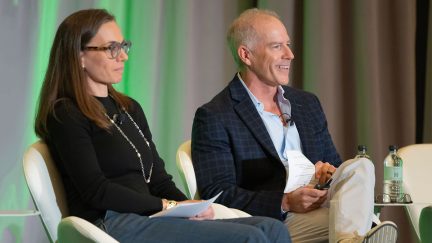For more stories like this, sign up for the PLANADVISERdash daily newsletter.
Financial Education Improves Retirement Savings Outcomes
A financial management course changed the retirement savings behavior of Army members, Harvard University John F. Kennedy School of Government Professor Brigitte C. Madrian said during a State Street Global Advisors (SSgA) media event detailing SSgA’s Defined Contribution Investor Survey. (See “DC Participants Want to Save More, Need Education and Help.”)
Before the course, participants had an 11% participation rate in the Federal Thrift Savings Plans during year one and 17% in year two. After the course, participants had a 27% participation rate in year one and 47% in year two.
Participants’ monthly contributions also increased following education. Before the course, participants set aside $15 in year one and $22 in year two. After the course, participants set aside $32 in year one and $56 in year two.
When teaching participants, Madrian said plan sponsors should use rule-of-thumb-based education. An example lesson could be on the appropriate amount of money to set aside for retirement. Using the rule-of-thumb approach, Madrian suggests that plan sponsors tell participants what percentage of their income they should save for retirement (she used 10% of income as an example).
Madrian said employers should offer classes during paid work hours to encourage employees to attend them.
(Cont...)
Kristi Mitchem, head of global defined contribution at SSgA, suggested that employers offer classes during convenient times such as breaks and lunch to increase attendance. Even offering promotional products with your company’s logo to participants can encourage employees to check out an event.
Participants’ preferences for
financial education may vary, and could extend beyond traditional classroom
settings. For example, Madrian said,“[S]ome people who are antisocial, they
might prefer the Internet.”
Regardless of how employees gain financial knowledge, nobody is expecting
participants to become the next George Soros or Warren Buffet. “We’re not all
trained to be investment experts,” Mitchem acknowledged.
Madrian agreed, saying that participants can turn to those who specialize in investments, just as they turn to other professionals to solve problems in other aspects of their lives. “I don’t have to know how to fix a car. I take it into the auto body shop,” she said.
You Might Also Like:

Rethinking Opportunities for RIA Growth

Plan Fiduciaries Compare Annuities in Subscription-Based ‘Hub’

Advisers Step Up as Clients Face Market Uncertainty
« DC Participants Want to Save More, Need Education and Help